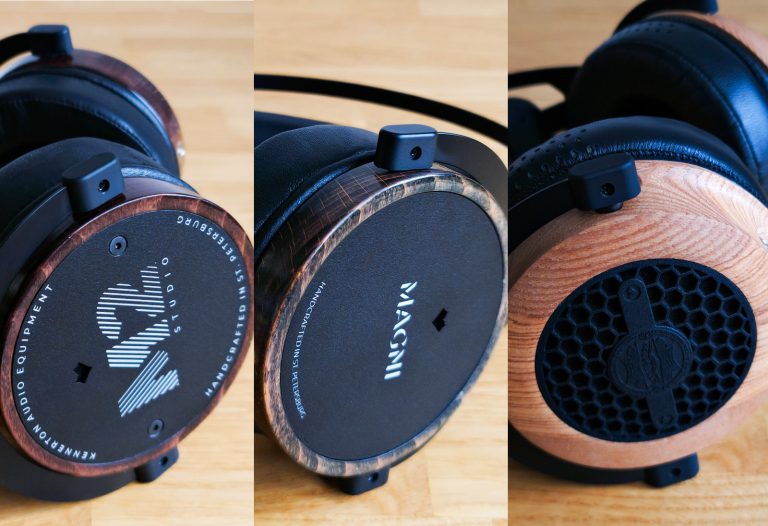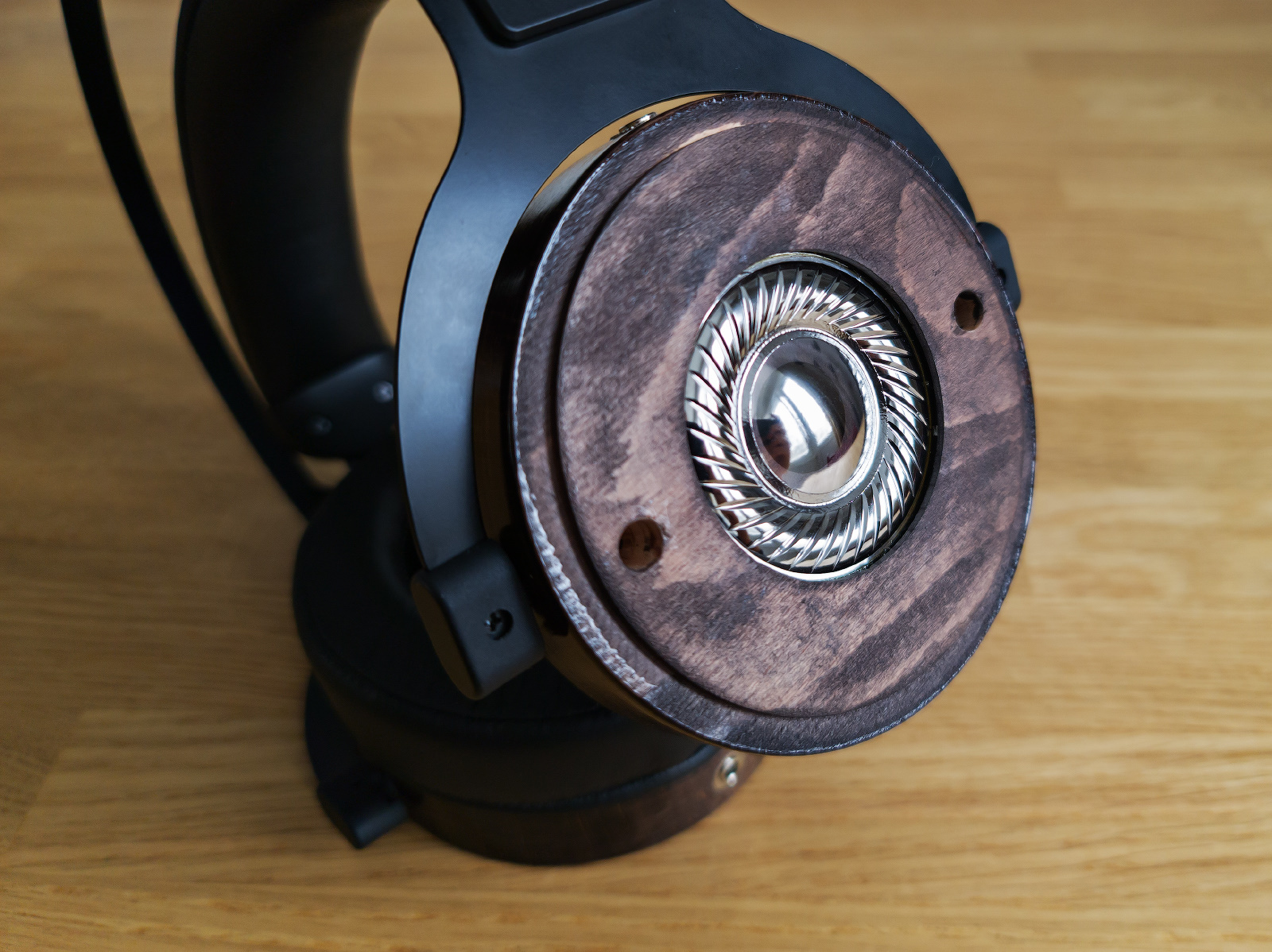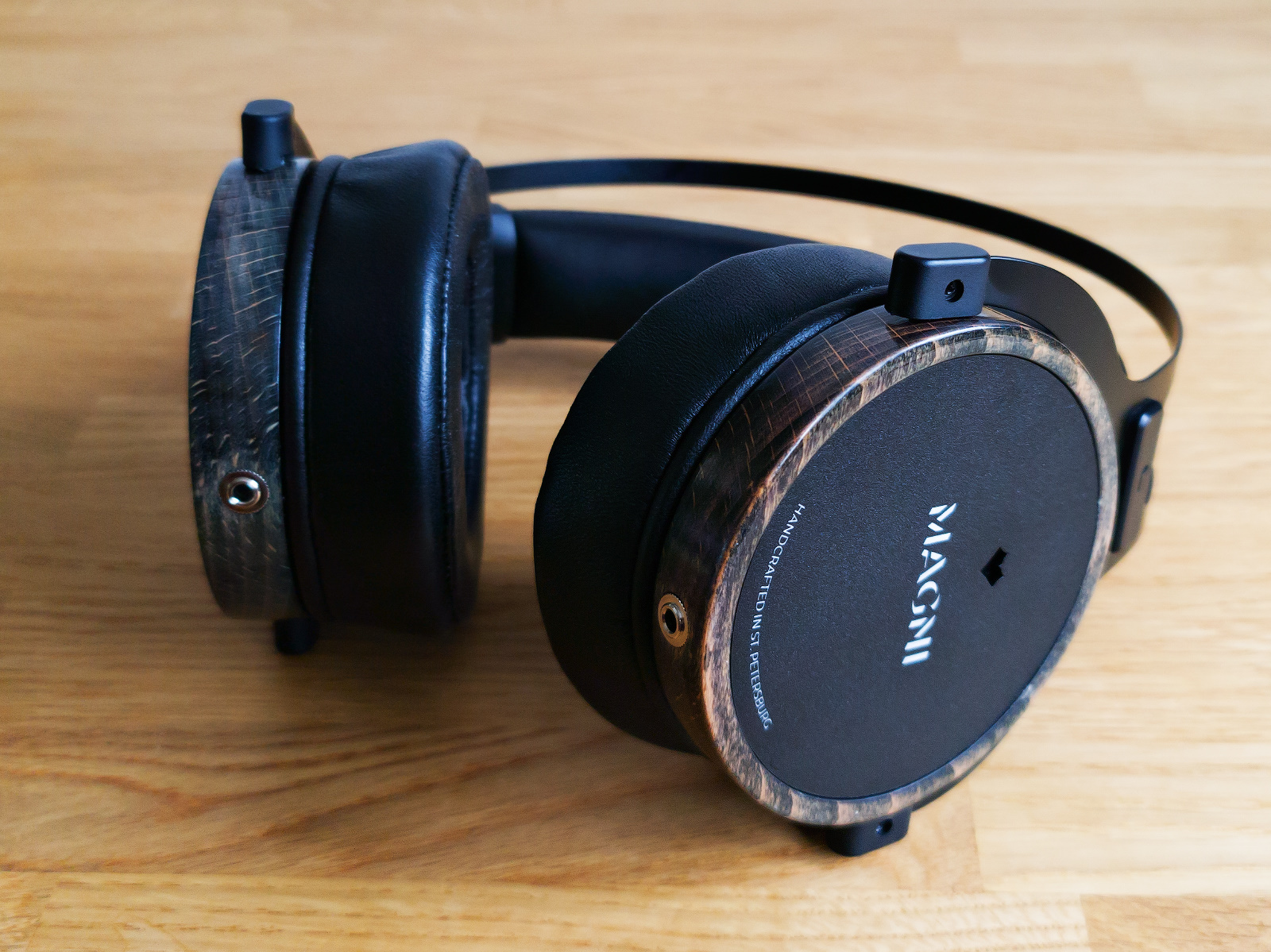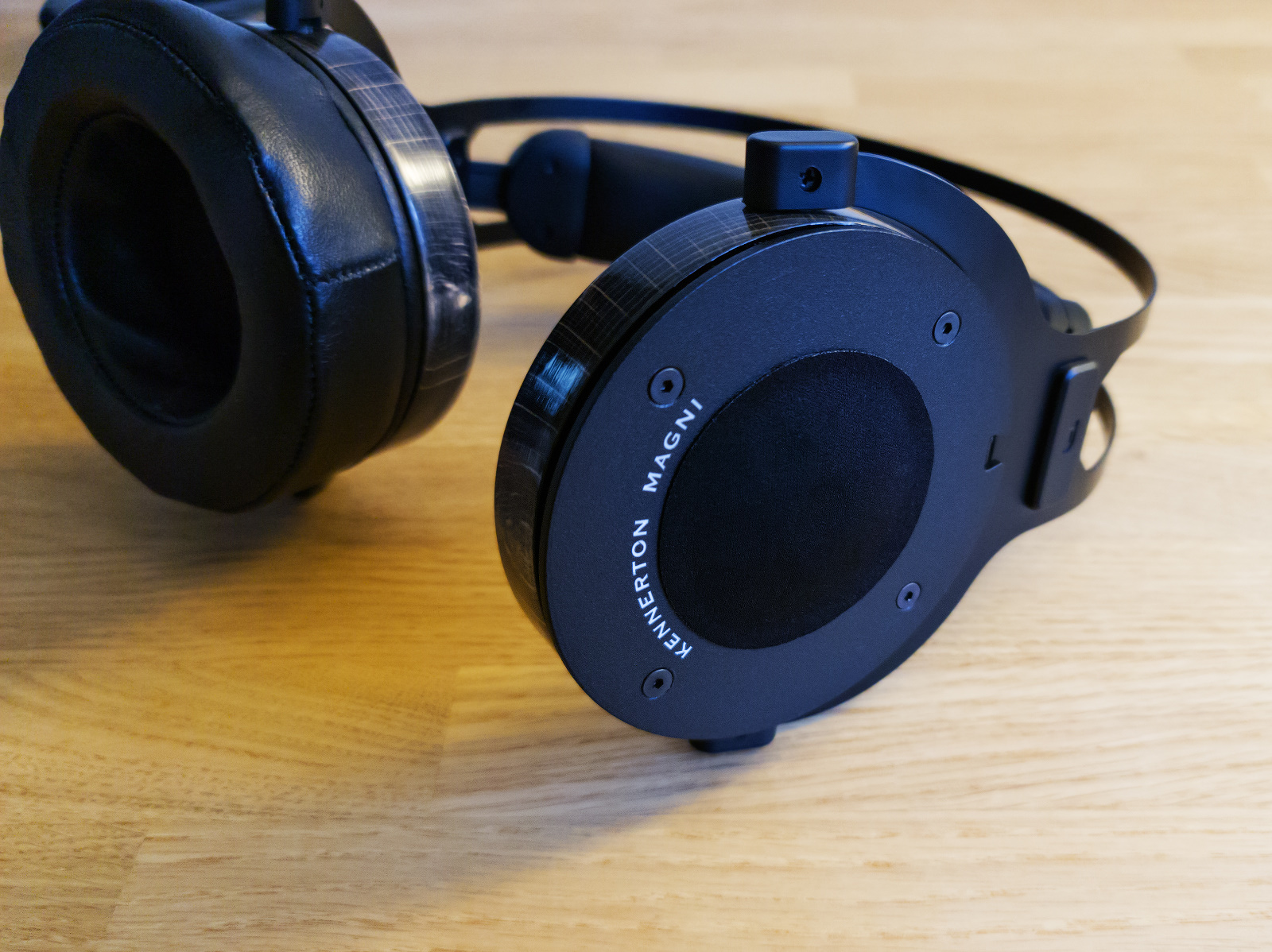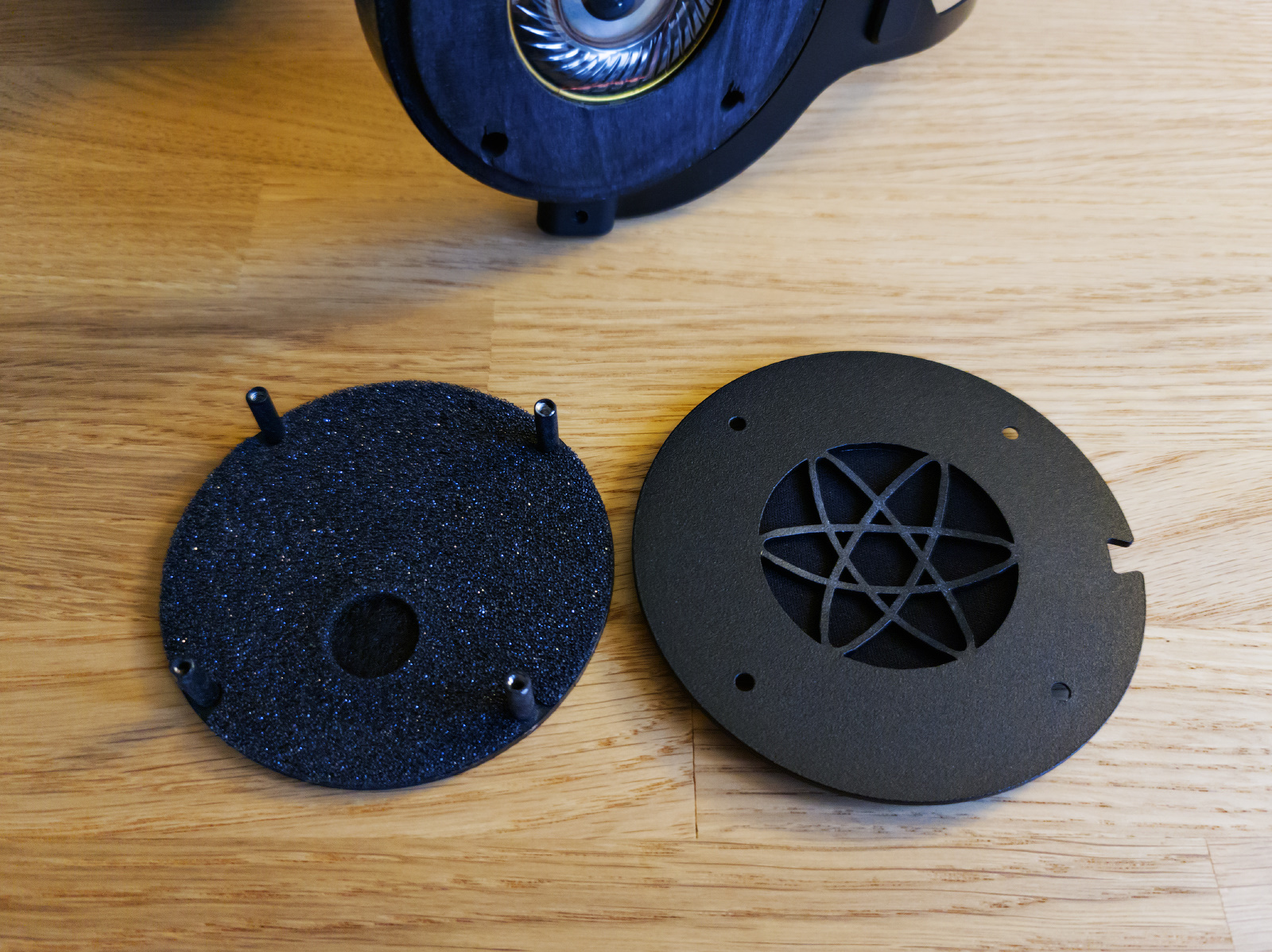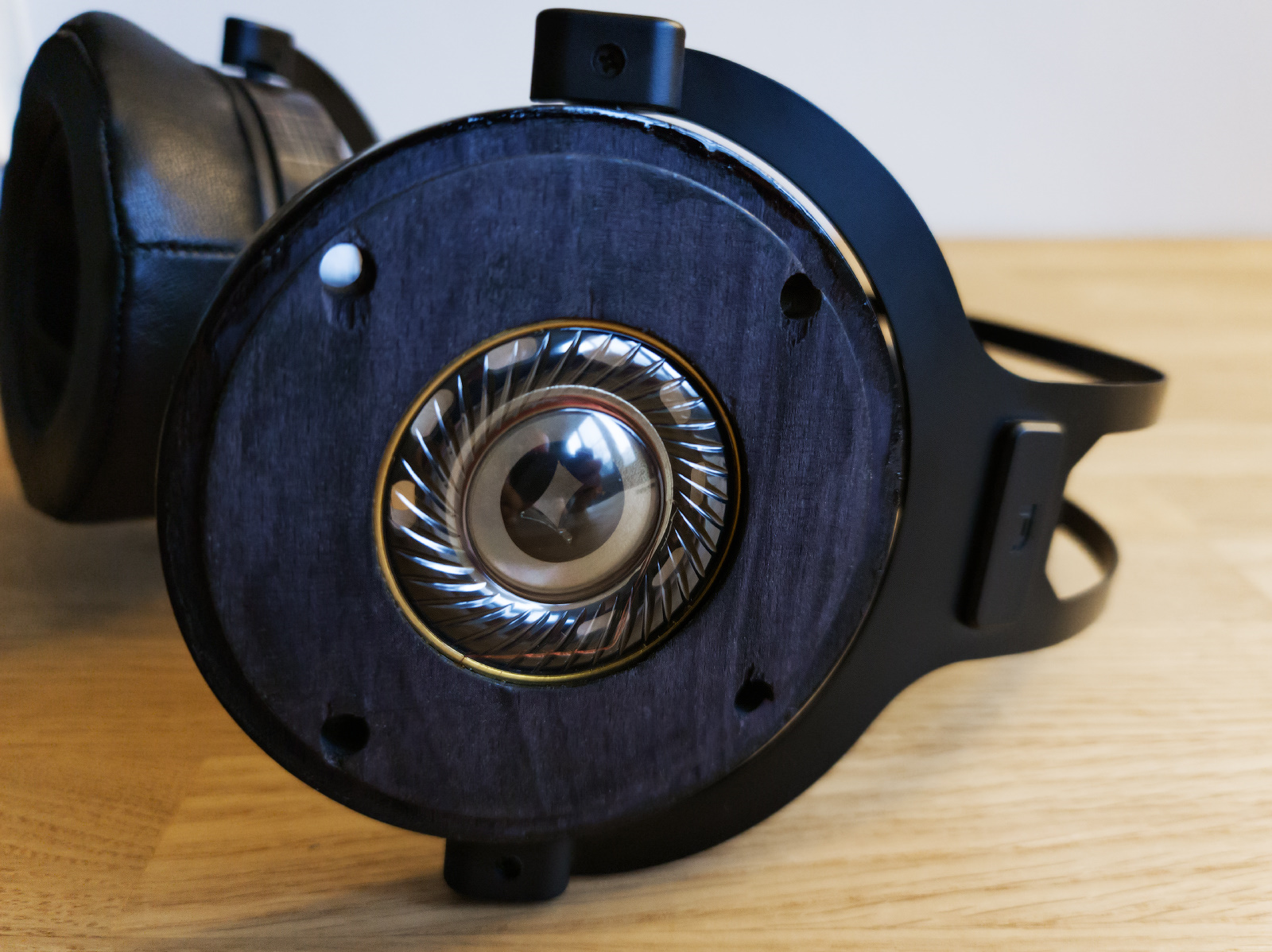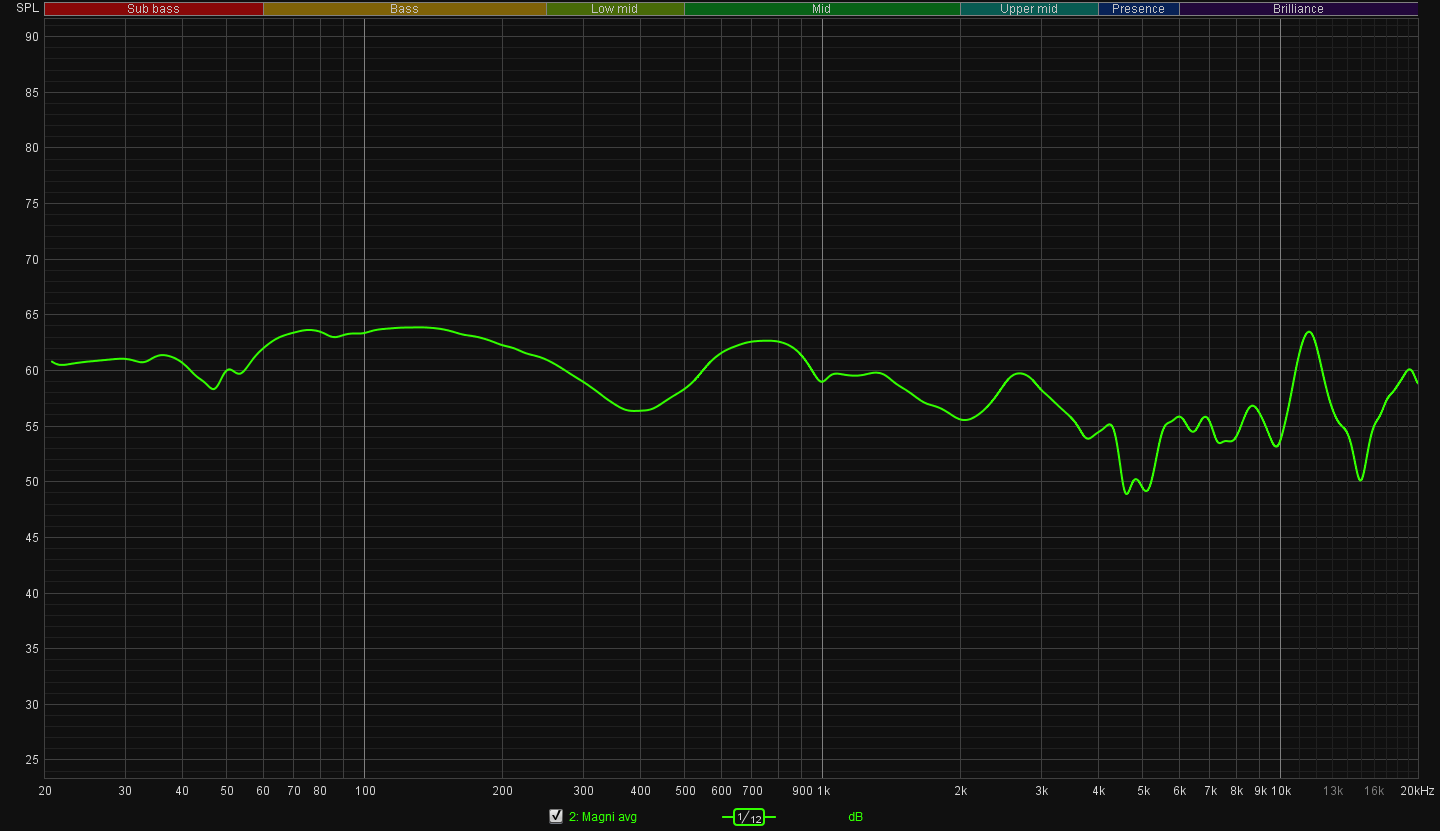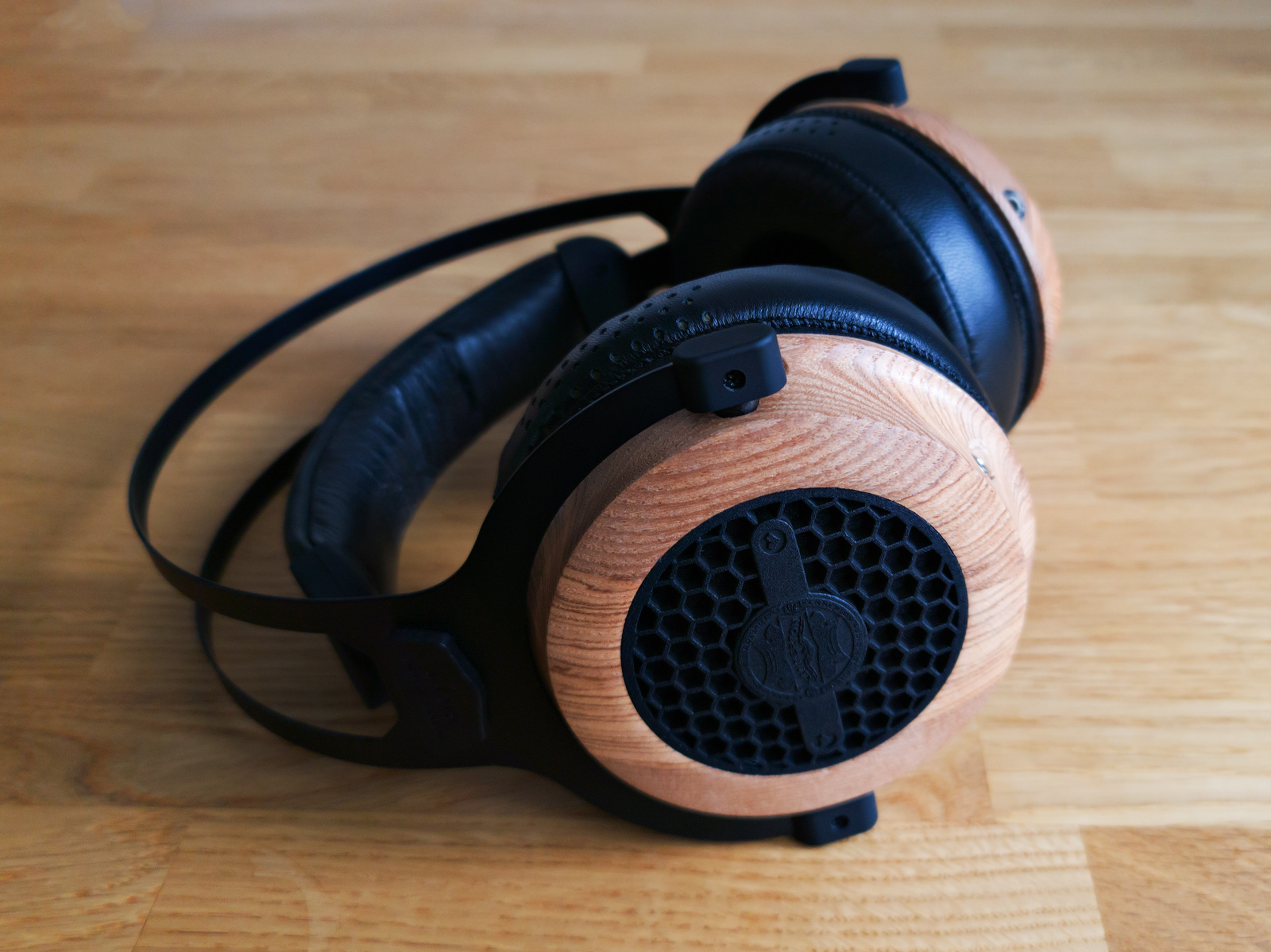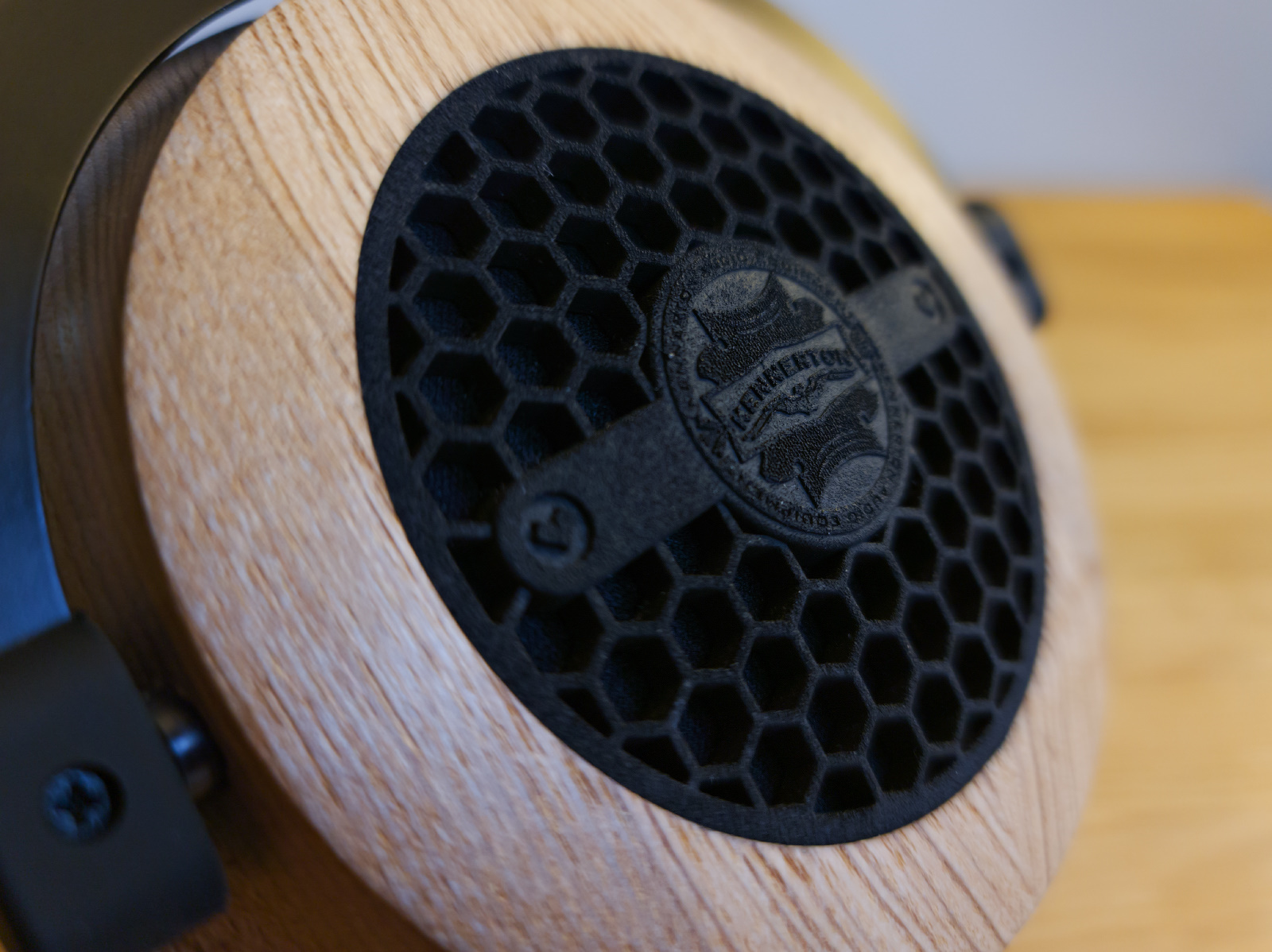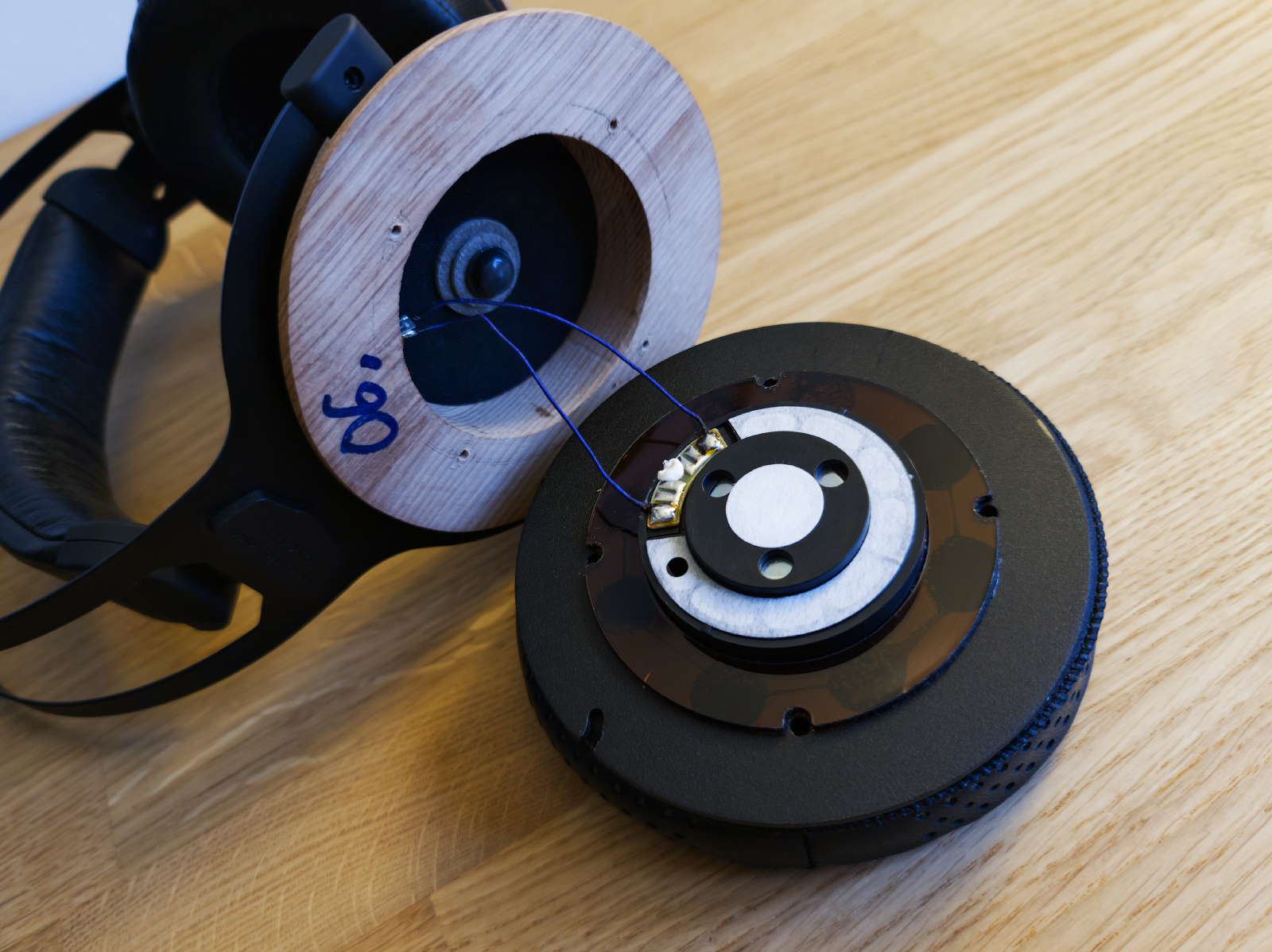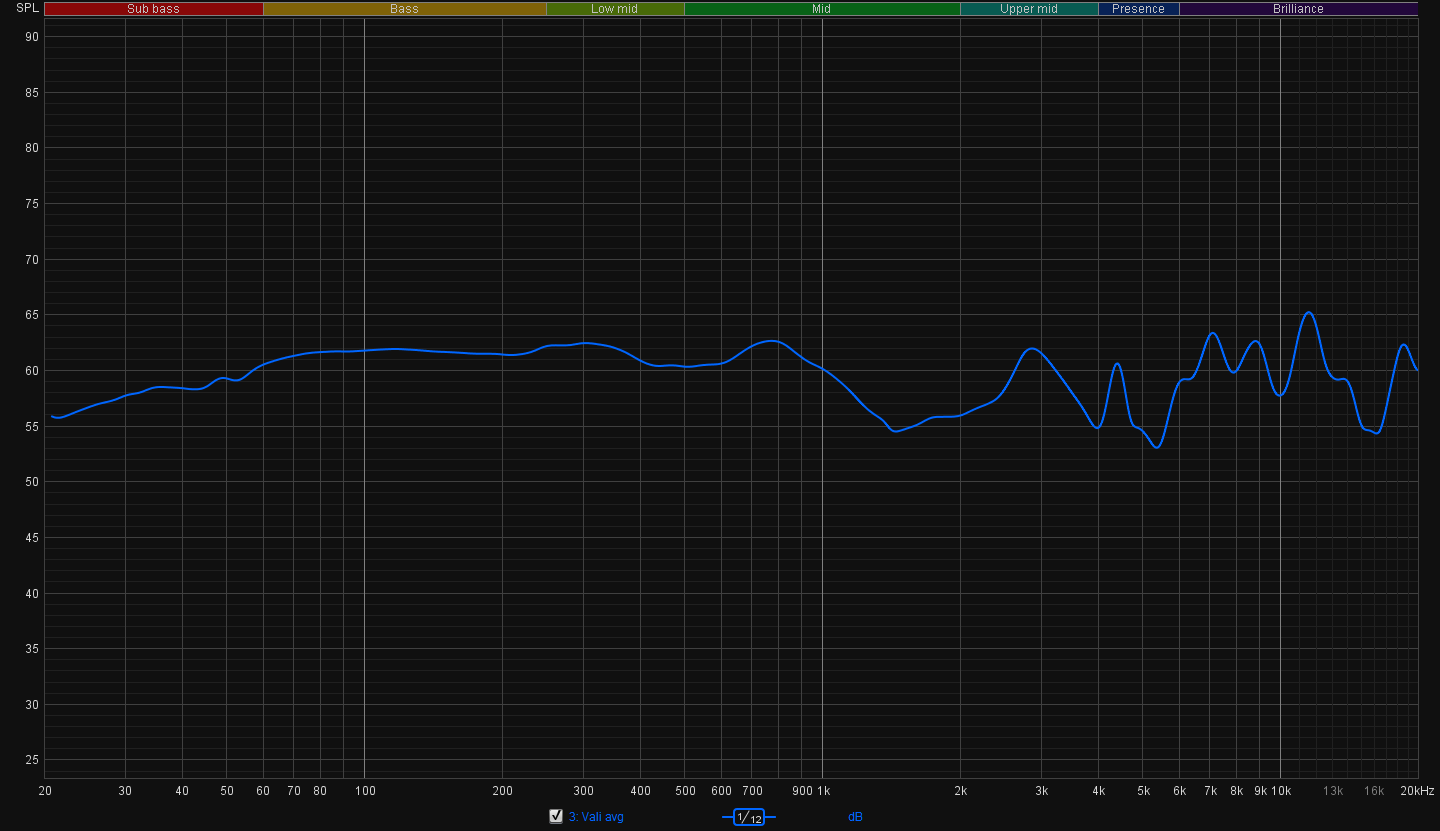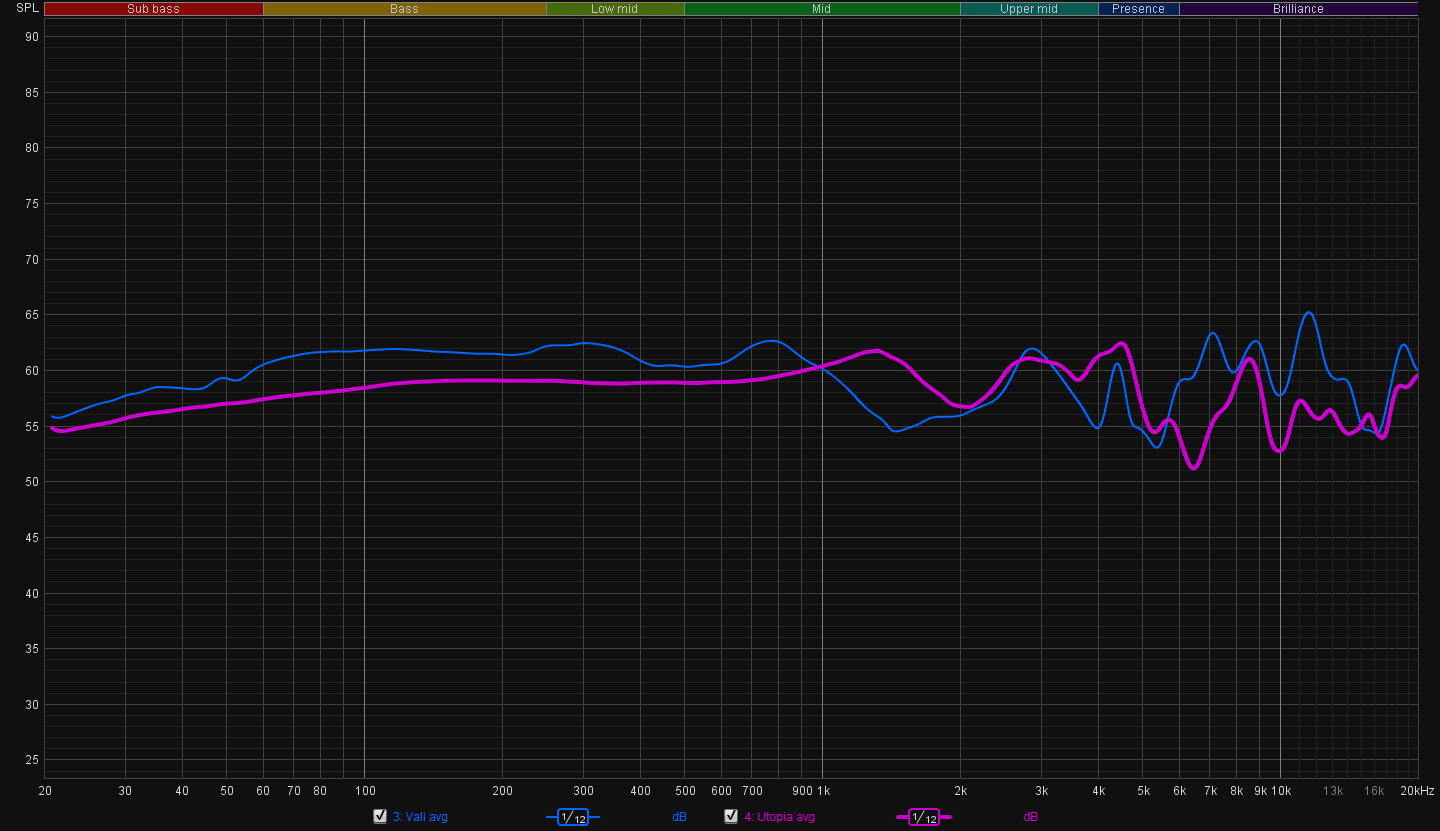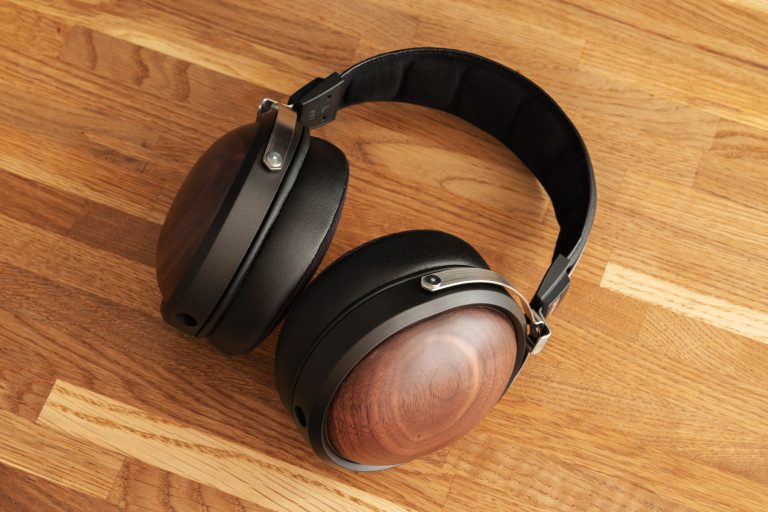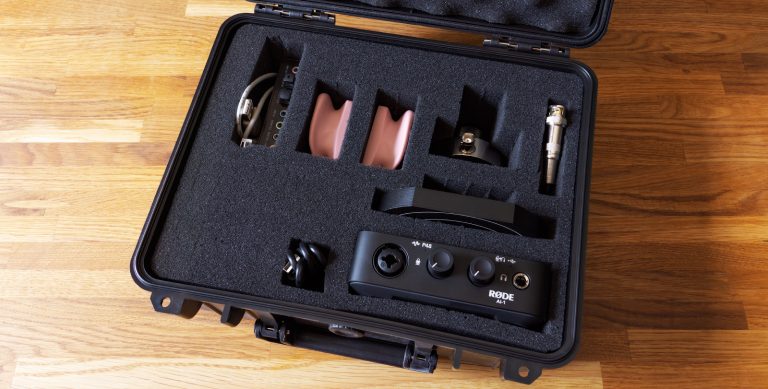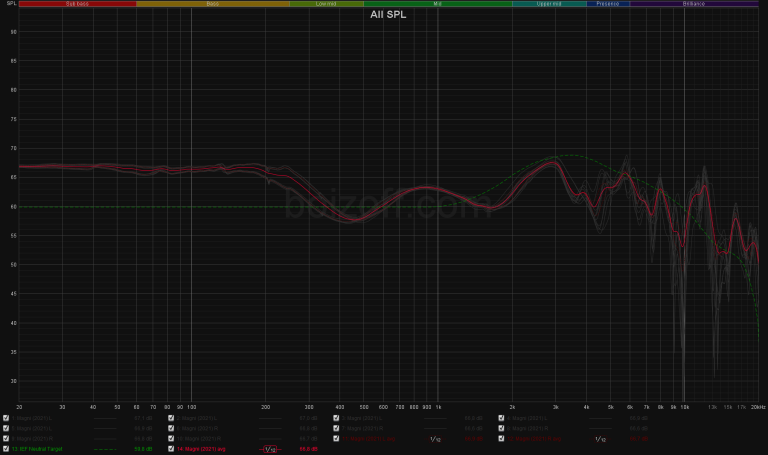M12s, Magni, Vali: a comparative review of Kennerton headphones
I’ve got three pairs of Kennerton headphones delivered at once for a review: the M12s, the Magni and the Vali.
I’ve already reviewed the more expensive models, which are the Gjallarhorn and the Wodan, and now it’s time to take a look at the less pricey representatives of the line. These are two closed-back and one open-back dynamic model.
I’ll describe the features of each of them, show the measurements, and compare them with each other below. Along the way, I’ll try to explain what these headphones are best suited for and which types of listeners they primarily target.
A couple of technical points about equipment and diagrams you need to know before we proceed
I’ve tested the headphones using a stationary DAC + RME ADI-2 DAC amplifier (with gain in Auto Ref Level mode), a Hiby R5 portable music player, as well as a Samsung Galaxy S10 smartphone. The headphones were connected with Kennerton cables provided with the headphones.
The measurements were made using a modified miniDSP EARS measuring rig calibrated to the target curve suggested by the InEarFidelity website (you’ll probably want to read my recent article on target curves (google translated), Fig. 14) plus a 2 dB rise at the bottom of the range. In my diagrams the headphone measurements corresponding to the IEF target curve should look like a flat curve. The 4–7 kHz range isn’t exactly correct in all sections, but the measuring rig is still being tuned-up, so the text description is going to be more trustworthy here. For other sections of the frequency range, the diagrams are reliable as much as they could be in headphones measurements. For each of the earcups, the measurements were made until 5 consistent measurements were obtained for the left and the right channels; any deviant measurements were excluded. The resulting measurements were obtained by averaging the responses of two channels, that is, ten measurements in total were taken into account. All diagrams shown feature 1/12 octave smoothing.
Don’t miss a more detailed post about the rig I’ve used and the headphones’ measurements coming in January 2021.
All pictures are clickable to enlarge.
Kennerton M12s
Quick specifications overview
- Design: ear-enveloping closed-back with dynamic driver.
- Impedance: 33 Ohms.
- Sensitivity: 114 dB.
- Weight: 394 grams.
Design, build quality, comfort level
The design itself is quite simple and practical. The model name is indicated on the outer metal plate. The build quality is high — as always with Kennerton products. The fit is quite relaxed, and the headphones don’t put any pressure on the ears at all.
The M12s version, which I’ve got for review, sports new earpads design. These are made of much thinner leather compared to standard Kennerton ones, very soft and comfortable on the skin. And if the previous version of Kennerton earpads was something to complain about since it was pretty rigid, this version is almost perfect.
The sound insulation level is average with about 40% of noise penetrating inside if no music is playing. In the opposite direction, that is from inside out, almost no sound leaks.
Internal design
The M12s use a 5 cm dynamic driver with titanium coating.
The earcups are pretty minimalistic in terms of geometry with damping on the inside part.
The connectors go vertically from the bottom of the earcups.
Overall frequency balance and sound signature
As for the dominant sound for the M12s, it’s bass in particular and the lower section of the frequency range in general.
The lower-frequency range sounds very thick, so the overall sound delivery isn’t exactly detailed: here the bass speed is clearly sacrificed to the amount aspect. So, the lower-frequency range is the dominant sound of the Kennerton M12s. In this context, the M12s can be described primarily as dark and warm sounding headphones.
Therefore, every single classic rock track — for example, by Led Zeppelin, Scorpions, Black Sabbath, Uriah Heep, AC/DC, etc. — sounds very rich and thick, and there’s an almost palpable pleasant pressure on the eardrums.
The mid-frequency range is lower than it could be, and the upper-frequency range, although not too smooth, is being delivered nevertheless in full in the most important frequency intervals. There’s a noticeable sharp peak somewhere around the top, and everything that’s even higher is radically reduced.
Here’s what we have for this model: the bass dominates, the bottom of the middle section is dropped, the middle of the middle section is raised, and the upper-frequency aspect is somewhat hustled away, though not completely suppressed. The very top of the range is almost soundless. So, the overall picture is as follows: the sound delivery is more or less V-shaped with significant dominance of the left part of the frequency response.
Soundstage and instruments positioning
The sound dimension transmission is rather medium-rate, since the very top of the frequency range is significantly reduced. Nevertheless, the inflated bass creates a certain dimension effect, plus the middle section sounds clear and quite confident: all of this creates a pretty positive presence effect. The instrument positioning is reflected passably, but there’s nothing to be enthusiastic about. I mean, it’s possible to imagine where the separate sounds come from, but the impression isn’t even close to the best versions of the M12s. In other words, you only can tell if the instrument is rather close or far from the mic, but no further details are audible.
I’d suggest it’s because of that uneven frequency response.
Measurements
The sub-bass is accentuated almost to the level of that 2018 version’s Harman curve, while the bass is raised even more radically. I’d also note that since the headphones sit more tightly on the test rig than on a real human head (such as mine – I don’t have many heads to choose from), you’d probably never hear such a smooth accentuated sub-bass in your M12s. Indeed, the headphones actually sound somewhat different from the diagram I’ve got – in my perception, the volume simply increases linearly up to about 170 Hz, then drops to 340 Hz, then rises to the supremum of 800 Hz.
And yes, there is a noticeable dip in the lower middle of the range. This one should’ve made the sound slightly more high-pitched than in the recording, but in reality it’s not like that. Most likely, this happens due to the smoothness of the decline and the rise. The next bump at 800 Hz also slightly grates on your ears, although it saturates the sound with some boominess.
Next, I’d mention a more or less even interval at 3–4 kHz, which is a very good thing to hear.
The upper-frequency range delivery also strongly depends on how exactly you place the headphones on your head. There are three things I’d point out here.
- The 6–7 kHz range somewhat corresponds to the benchmark setting, although it’s located below the lower-frequency section. Therefore, the bass dominates, but the main part of the upper-frequencies isn’t very much affected when correlated with the bass.
- There’s a sharp peak at 11.3 kHz at any position of headphones over your ears. And despite the fact that it doesn’t even reach the height of the benchmark, it’s still a sharp peak, so in some music tracks, the headphones would give out a rather sharp sound. Such a top section sounding may feel like ‘crystal’, or ‘crisp’ — you’ll never guess which one you’ll hear.
- The 3–4 kHz range varies by ±2 dB depending on the position of the earcup over the ear. This probably has something to do with the resonance that occurs inside the closed-back earcup.
Conclusions
In summary:
- The Kennerton M12s aren’t for everyone: you either like the sound delivery or you don’t, though such ‘warm’ headphones always create a fun and somewhat dramatic mood. The name of the model sports an ‘S’ (for ‘Studio’), hinting at the evenness of the setting. Does the model have anything to do with evenness? Not really. The M12s reproduce the lower-frequency range so thick and fat you’d probably want to spread it on bread and eat it (then spend a month in the gym). You know how some headphones are credited for delivering exactly what’s in the recording? The M12s approach the sound delivery in a completely different way, saturating any track with pressure and additional weight. They might not sound very smooth and they sometimes just buzz in some tracks and steal the details from other tracks. But they always sound spectacular. Let me remind you, these are closed-back headphones. Moreover, they’re the cheapest of the entire Kennerton line.
- I’d say that these headphones are for music that isn’t overloaded with low-frequencies, and are a perfect choice for rock, power metal, blues, some slow instrumental music.
- You certainly can use them for gaming, no matter the game genre or is it for lonely single-players or a cybersports competition. The M12s delivers the important sections of the frequency range, so you’ll clearly hear the footsteps of any opponent, or the sounds of reloading weapons, or the rustle of bushes. Well, of course, the explosions bang just flawlessly. If you attach a microphone, there’s a great gaming headset for you (DIY or cry, huh?).
The frequency response setting implemented in the M12s, as well as low resistance and high sensitivity, allow you to comfortably use these headphones not only with any source, but also with music content of any quality. In this regard, M12s are extremely versatile: they’ll never torture you with any mp3 compression artifacts, quality loss when connected to a Bluetooth transmitter, etc. The M12s aren’t about digging for minuscule details and decomposing tracks down to atoms, they’re all about delicious sound delivery, some fun, good vibes and a bombastic party inside your head.
Kennerton Magni
Quick specifications overview
- Type: ear-enveloping closed-back with dynamic driver.
- Impedance: 33 Ohms.
- Sensitivity: 112 dB.
- Weight: 402 grams.
Design, build quality, comfort level
The Magni look exactly the same as the M12s: the headband design, the outer form of the earcup, etc. They’re completely identical. The fit and comfort, again, don’t differ in any way; the weight is also almost equal to the weight of the M12s. The driver and the damping are different, though. And the inscriptions on the outer metal plate aren’t the same, of course.
The sound insulation is similar to the M12s’.
Internal design
The Magni feature a 5 cm graphene-coated driver. There are 4 screws under the earpad to hold the front and rear metal plates together.
The connectors go vertically from the bottom of the earcups, too.
Overall frequency balance and sound signature
The Magni use the same approach to sound delivery as in the M12s, but on a completely different level of real output. The Magni sound perfectly balanced for a closed-back model with such a price tag. The sound emphasizes the bass, the middle and some selected frequency ranges in the upper section: from 5 to 6 kHz, as well as from 7 kHz to 11.3 kHz as separate peaks.
The frequency response in the left area sounds smooth up to 600 Hz point. The bass is raised by 5 dB, but since there are no sharp dips or peaks, such a delivery feels completely natural. Accordingly, any track where this frequency range is actively engaged is delivered in a balanced, somewhat emotional way, but close to the original artist’s idea. The lower-frequencies in albums such as Myrkr by Heldom, A Thousand Clouds by Emancipator, 9 Theory or in the Panic track by Forest Swords don’t turn into a mush of sounds or just an annoying buzz.
That’s the aspect where the M12s lose to Magni by a thousand points.
The bottom of the middle section is accentuated, and this sometimes infuses the sound with a certain boominess, while the top is significantly reduced, and this is the biggest complaint about the Magni’s sound delivery. Nevertheless, some melodic doom prog metal such as Green Carnation, rock with female vocals like 8mm, or instrumental Captured Spirits by Mammalian Hands sound awesome. The high-pitched vocals of Rishloo or the magnificent Leprous seem pretty distant from the position of the listener and sound less voluminous than they should be.
The upper-frequency range is smoothly lowered relative to the middle and bottom sections, though in the key 5–6 kHz area, it’s not pinned down too much. The only thing to complain about is those small peaks at 7 and 11.3 kHz, which sometimes make the sound sharper, though it’s not true for any track, and it’s actually only about a little sharpness — not a mercilessly grating high tones.
In general, the Magni are perfectly balanced and don’t goof up when playing some of quite complex, diverse albums, such as Creaks by Hidden Orchestra, Alt:02 by Carbon Based Lifeforms, Nuit Noire by Lost In Kiev, Nulukatuk by Rekevin or even Marked for Death by Emma Ruth Rundle.
The Magni sound literally fantastic for a closed-back dynamic model of its price and easily beat many competitors within the same price range.
Soundstage and instruments positioning
Due to some greater evenness of the frequency response compared to the M12s, the soundstage here has a larger scale. The open-back models or Kennerton Gjallarhorn JM are still a whole lot better, since a dip in the upper middle section and an uneven upper-frequencies don’t make the soundstage build any better. However, the headphones won’t cause a claustrophobia onset, and a recording with initially surround sound is played more or less as intended.
The distinctness of the instrument positioning is superior to that of the M12s, but still far from perfect. I’d rate it a solid 3+ out of 5 (or a C grade, or 10/20 or wherever you come from).
Measurements
I’ve already described the main features above, so let’s move on. The only thing I’d add is that the dip at 400 Hz is practically imperceptible by ear, and the peak at 11.3 kHz feels slightly less than the diagram suggests, which is, I believe, a glitch of my hearing.
Again, the measurements are made using a rig with a perfect headphones fit. The fit will never be as tight against ears as on the rig, so the left ‘tail’ of the frequency response diagram is going to be smoothly lowered. And that’s actually a more realistic picture: I personally didn’t hear the incredibly smooth extended sub-bass when using Magni: from what I’ve heard, it just fades out smoothly, as it should.
Conclusions
Kennerton Magni beats the M12s in every aspect, delivering a smoother and less ‘colored’ sound, better dynamics, and a wider and more valid soundstage. Magni can be used as versatile headphones that make the sound a little different from the original, but still focus not only on a groovy delivery, but also on some analysis of the track itself. I still can’t define the Magni as ultra-detailed and exacting headphones, but they’re actually close to the conventional sound standard. Speaking about the ‘Studio’ suffix mentioned above: that’s the model that could sport the ‘S’ in its model name without any deception. A comfortable fit makes it possible to use them for a long time, and the closed-back design will allow you to listen to your favorite music at a very high volume, without disturbing anyone around. As for the gaming aspect, the Magni are surely better than any specialized closed-back gaming model. Yup.
Kennerton Vali
Quick specifications overview
- Type: ear-enveloping closed-back with dynamic driver.
- Impedance: 32 Ohms.
- Sensitivity: 100 dB.
- Weight: 444 grams.
Design, build quality, comfort level
I’d only note that the headphones I’ve got delivered to me, the decorative grid is covered with a pretty odd grainy black coating, which isn’t used in any other Kennerton model. Because of this, small details printed in the center aren’t easily readable. To me, it’s a really funny decision, and the Kennerton representative confirmed my guesses: this isn’t a regular version, but an experimental design. Whew! You can check out the usual design of the grid on the manufacturer’s website in the corresponding section.
The fit and the tightness are similar to the M12 and the Magni, though the earpads here have a noticeable bevel, and the earcups are larger.
Therefore, the Vali can fit tightly against your head without any unpleasant pressure on the ears. Naturally, you still need to try and find the right angle of the earpads rotation.
The connectors are attached at an angle from the front, which is pretty convenient.
Thanks to the open-back design, the listener’s ears don’t boil with the headphones on for a long time. And this same open-back design allows everyone around to enjoy your music with you — since no passive noise isolation is here. Duh.
Internal design
The same graphene-coated speaker as Magni is used in the Vali model. There are silicone (at least it looks like silicone) hemispheres inside the earcups for sound diffusion purposes.
Overall frequency balance and sound signature
The Vali’s sound delivery is what’s usually called an audiophile type. In fact, the trick is in some nice and smooth tuning, which practically doesn’t conceal any individual sections of the frequency range. The middle and top sections dominate, while the sound is very open and voluminous, with a very small (I mean, extra small) bit of sharpness.
By ear, the bass is reproduced completely evenly up to 650 Hz. I’d call it dry, fast and collected. From my point of view of a neutral sound fan, this is an almost perfect bass. Fast drum parts like in Amon Amarth’s Cry Of The Black Birds or Bloodred Hourglass’s Waves of Black sound great and lively.
There’s a peak in the middle section at 760 Hz and a smooth decline, followed by a rise up to 2 kHz, and then to 3 kHz. The area around 3 kHz is clearly emphasized, though not too much. This is a debatable approach that makes the headphones sound not only more open, but also shrilly at the same time. However, the experience shows that as soon as you find the right angle of rotation of the earpads and fit the headphones on the head tightly, this range loses its excessive brightness and sounds just as it should, no more and no less.
As for the upper section of the range, everything looks very good, it doesn’t dominate over the lower-frequency component and doesn’t have any significant peaks or dips beyond ±2 dB. The only exception is a significant and audibly perceptible peak at 11 kHz, which sometimes infuses the sound with a slight stiffness. If you need an example, here it is: the singer’s voice is a bit rustling when pronouncing ‘…is you to be with me’ at the end (at 4:50) of the What Love Can Be track by Kingdom Come. Though the cymbals in the Untouched by Alcest sound just fine.
Soundstage and instruments positioning
When the frequency balance is maintained, the driver is high-quality, and the design of the headphones is open-back, then you can expect the soundstage to be just fine. The soundstage is reproduced very credibly to the left and right (and a little less credibly in depth). The instrument positioning is excellent, and all three-dimensional effects are delivered in full.
In this regard, you just can’t overpraise the Vali.
Measurements
I think there’s nothing special to comment on: there’s a smooth rise in the range up to 60 Hz, and the unevenness in the 60–750 Hz range is only 1 dB, which is cool. Then there’s a dip and a subsequent rise by 3 kHz. Look at the peak at 11 kHz, too.
In general, the frequency response is very smooth, with the exception of the 1–3 kHz area, but this one is difficult to tell when listening to, to be honest.
To better understand the sound tuning setting, let’s compare the frequency response of the Kennerton Vali and the Focal Utopia, which have an exceptionally balanced tuning.
As we can see, the most curvy section is around 1.4 kHz. Utopia’s sound is perceived as more light and fairy compared to the Vali’s. Though in general, compared to other headphones costing around 7 times as much as the Vali, everything looks very, very good.
Conclusions
The Kennerton’s Vali is a remarkable representative of open-back dynamic headphones with excellent detailing, high dynamics, a fairly smooth frequency response (actually, close to ideal in the 60–750 Hz range) and an excellent balance of lower and higher frequencies. If you don’t know what a truly even sound is, then the Vali’s delivery may seem light to you, but in fact — no, they’re well balanced and sound exactly what some very good headphones should sound. And if you’re over 55–60 years old, then it would sound just very smoothly to you.
The Vali definitely suit the best for a more analytical listening, they’re very demanding in terms of the recording quality. I’d say, these are a type of headphones that help you extract something new from some long-familiar songs. Do you think you know every single beep in your favorite song? Don’t be so sure about it, try listening to it with Vali. I wouldn’t recommend listening to some overly compressed and poorly played music with those, or you risk to abandon listening to the music at all. Or, at least, until your trauma is recovered.
It’s difficult to talk about genre whimsicality or versatility here, since it all depends on the listener’s habits to the sound delivery of particular music types. Personally, I’d recommend trying out the Vali primarily on complex polyphonic instrumentals, live vocals, jazz, soul. Lund Quartet, John Coltrane, Tubular Bells by Mike Oldfield, Saltillo, some academic pieces – this is the type of music for Vali to unlock their sound delivery potential. It may also happen that they prove to be even better than the competitors creations. I’d also assume that fans of all types of metal (except maybe post-metal) won’t probably like the Vali; you just can’t listen to such music like this.
For gamers, the Vali are great, as expected, but only in terms of positioning sound sources. For a spectacular sound picture, go somewhere else. Did you know, for example, that in Apex Legends all the characters’ lines are extremely compressed and have an unpleasant ringing undersound, and the explosions aren’t exactly… well, explosive? Then don’t play such games using this type of headphones, take the M12s or the Magni instead. Or just play and cry.
M12, Magni, Vali: comparison
M12S, Magni and Vali diagrams:
The three of them are very different, so it’s easy to compare.
- The Kennerton M12s aren’t for everyone, the ‘warm’ sounding is more about spectacular delivery, not accuracy. Compatible with any sound source and any quality recordings, the M12s are perfect for fans of massive bass in particular and thick sound delivery in general. The headphones are closed-back and provide comfortable fit, so there will definitely be no problems using them at home at any volume at any time of the day. Plus, they’re excellent for gaming.
- The Kennerton Magni aren’t for everyone too. The sound delivery isn’t exactly smooth, but allows some analysis when listening to the music. They’re for those who like the music to sound very close to the original creator’s idea. Given the closed-back design, this is a rather unique property. These headphones are genre-neutral, though more picky about the quality of recordings compared to the M12s. And, like the M12s, the Magni are undemanding to the power of the source, so both the smartphone and the built-in sound card should be enough to fully swing them.
- The Kennerton Vali are a completely different story and, to me, a completely different league in general — compared to the M12s and the Magni. The Vali are smooth, prone to monitored delivery with very high detail, legibility and reliability of sound reproduction, and even a certain elegance of delivery, so to say. In particular, the sound delivery is somewhat sharp and therefore seems slightly lightened. As for the disadvantages, it’s that awful dip around 1.4 kHz. Well, it’s indeed important to remember that they’re open-back, and this fact significantly reduces the range of use scenarios.
If you live with your partner or family, especially with children, and you like your music to pop your eyes out even in the night before you fall asleep, then when considering between the M12s and the Magni, it’s all about your budget, personal preferences, and music perception habits. But if your priority is to know how exactly the artists really conceived their musical pieces, and your family shares your interests or at least is okay with that, then don’t hesitate and grab the Vali. Don’t forget to re-download everything in your music collection to make sure it’s all in maximum quality. You’d also probably want to replace your sound source: don’t peg the jack into the first device you see, okay?
That’s it!
Well, of course, many thanks to Kennerton for the headphones they’ve provided for the review.
Like this review? You can support me on patreon.

